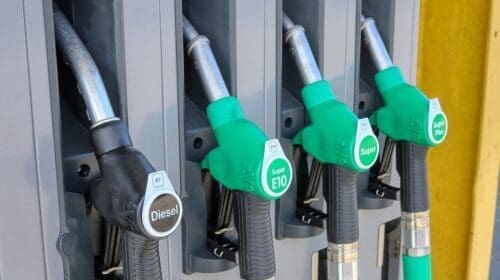As technological advancement continues, new solutions surface, promising to induce ease and increase profitability. While it might not appear possible, the interest in blockchain has been touted to solve issues spanning multiple business genres, and the energy industry is no exception. BakerHostetler, one of the largest law firms in the United States, manages its customers’ critical legal matters and recently hosted a webinar on blockchain’s possibilities in assisting the energy industry with reducing emissions and measuring carbon usage, two primary focuses in the transition to a clean energy future.
According to the “Future of Blockchain and Energy Industry” webinar and its host, Poe Leggette, a partner in BakerHostetler’s Houston office, blockchain serves as a tool that can be utilized to reduce costs with compliance and regulatory requirements. This revolutionary technology allows one to pull decarbonization data into one location and then measure it for an accurate accounting. To consider the meaning in general terms, blockchain is a computer system comprised of multiple servers working together and sharing data.
“If you’re just going to boast, then you’re going to be toast,” said Leggette. “But if you can measure, it’s a treasure.”
Accelerating in Specific Pillars
Sam Davies, technical lead for FTI Consulting, participated as a presenter in the recent webinar. While blockchain is often compared to Bitcoin, he explained the difference.
“Blockchain is not bitcoin,” said Davies. “Bitcoin is a used case of blockchain. We can use blockchain for the execution of data.”
Specific factors can be derived from the technology to resurrect the value from the data provided by blockchain. Each encompasses its level of importance and is critical when extracted.
- Trust: Blockchain provides a proven solution to data verification. It cryptographically proves what happens between the system’s participants. The ledger provides a tamper-proof or uncompromised record as data sharing occurs between nodes. Blockchain additionally reduces the potential for litigation or regulatory enforcement risks associated with external auditing services.
- Traceability and Transparency: Blockchain provides complete visibility into on-chain assets. While visibility requirements amongst participants remain critical, blockchain allows users to accomplish this task.
- Auditability: Blockchain enables taking a snapshot of the asset’s complete lifecycle and automatically reconciling data. This proves crucial in proving authenticity to an external party not part of the blockchain system.
- Ecosystem: The blockchain landscape offers a landscape that enables collaboration between multiple participants. Data can be shared and used by each user.
- Value: Blockchain uses a token system to track value. In addition to being tracked, it can additionally be audited.
Solving Real Energy Industry Issues
By harnessing blockchain’s critical pillars of problem-solving technology, the energy industry finds itself in an exciting and seemingly once-in-a-lifetime situation. Blockchain can cover significant areas that demand attention, including regulatory and ESG compliance, sustainable aviation fuel (SAF) supply chain, renewable fuel standards, and carbon credits and tokenization.
The energy industry data can be tokenized to create blockchain-based records of carbon offsets, energy consumption, generation, and other data resources, such as worker conditions. These tokens can be attached to an organization’s digital identity, offering a provable defense against greenwashing. The data can be tokenized by the generator, the distributor, the transmitter, or the supplier, all of which can be provided to investors, consumers, and regulators.
Blockchain allows for the counting and accounting of commodity production and sustainability attributes across the value chain. SAF’s feedstock and storage attributes benefit from audit verification reporting capabilities. Truck scale, corn storage, milling and protein production, fermentation, hydrocarbon production, storage, and rail and truck attribute data can all be brought to a primary platform enabled by blockchain, where the information is verified for ESG reporting. These sustainable attributes can result in digital assets.
According to another webinar presenter, Veronica Reynolds of BakerHostetler’s New York office, carbon markets have turned carbon into a commodity enabling emissions trading., but transparency and quality control standards still need to be improved. Blockchain provides an avenue to tokenize and publicly trade representations of carbon credits. The benefits associated with this solution include increased efficiency, streamlining of transactions, incentivizing of accountability, minimization of disputes, and providing better proof of ownership.
Overcoming Challenge
With every step of advancement comes a challenge. Blockchain’s potential to improve the energy industry only catalyzes the movement to defend its strengths and define its capabilities. Blockchain acts as the means to make mandatory carbon markets accessible to the public, but hurdles could arise in the form of regulation. They could become a currency equivalent, security, or commodity. Issuing and transacting these assets bear the potential of being subjected to regulatory obligations and enforcement risk.
Blockchain additionally carries the fear of the unknown. Its explanation of simplicity almost makes it appear mysterious and reckless, but the cultivation and development of information has long prevailed as a powerful tool in driving business. Blockchain’s promise of streamlining processes and sharing data to increase efficiency catapults it forward in growing popularity as a unique business solution benefiting energy sector companies from multiple vantage points.
“In 1971, Coach George Allen said, ‘The future is now,'” said Leggette to attendees. “Well, 52 years later, with blockchain, the future is still now.”
Nick Vaccaro is a freelance writer and photographer. In addition to providing technical writing services, he is an HSE consultant in the oil and gas industry with twelve years of experience. Vaccaro also contributes to SHALE Oil and Gas Business Magazine, American Oil and Gas Investor, Oil and Gas Investor, Energies Magazine and Louisiana Sportsman Magazine. He has a BA in photojournalism from Loyola University and resides in the New Orleans area. Vaccaro can be reached at 985-966-0957 or nav@vaccarogroupllc.com.
Oil and gas operations are commonly found in remote locations far from company headquarters. Now, it's possible to monitor pump operations, collate and analyze seismic data, and track employees around the world from almost anywhere. Whether employees are in the office or in the field, the internet and related applications enable a greater multidirectional flow of information – and control – than ever before.











